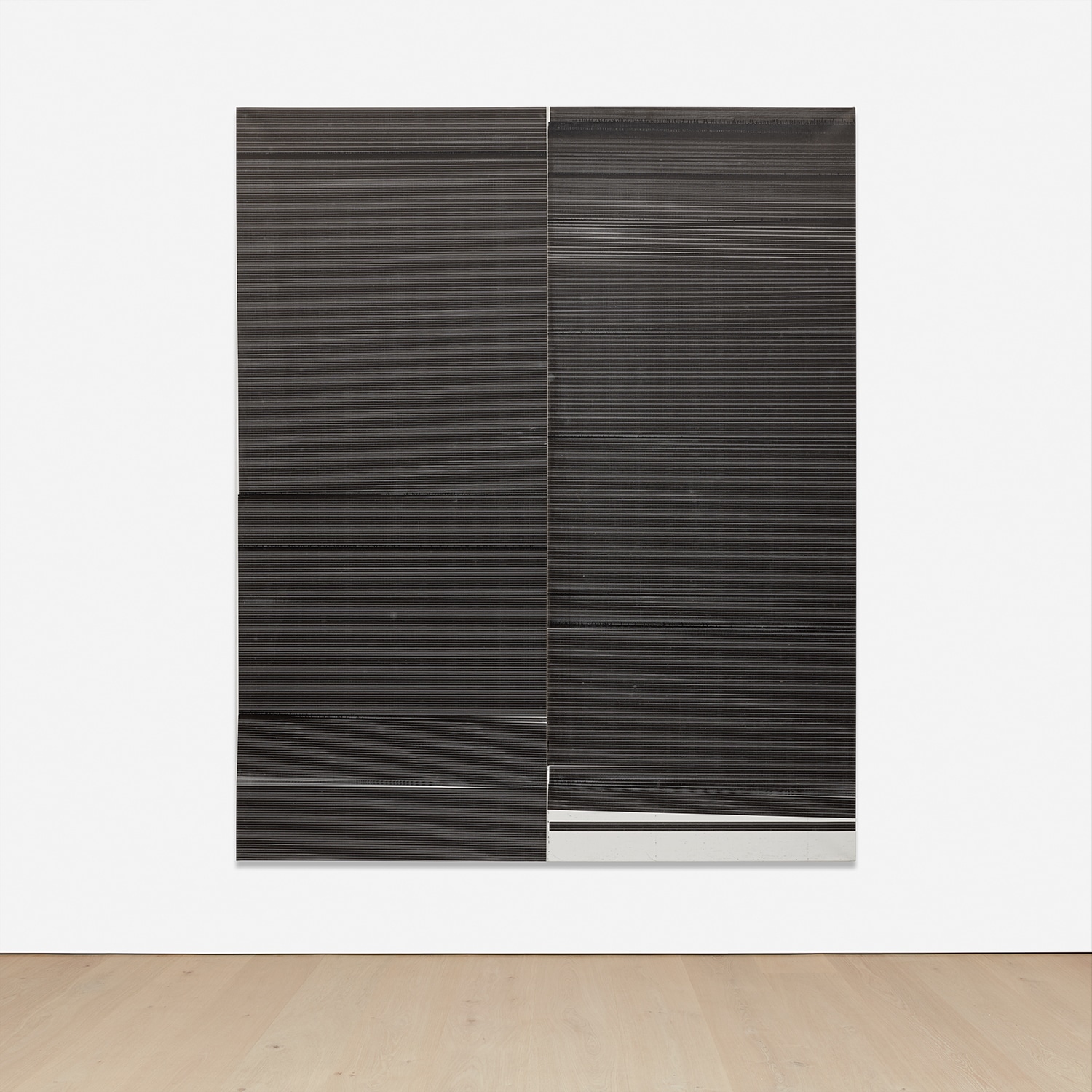

51
Wade Guyton
Untitled
- Estimate
- $70,000 - 90,000
Further Details
Wade Guyton modifies the archetypal black monochrome, emblem of modernity, in Untitled (2007).I The artist prints two identical black rectangles but tampers with the printing process, resulting in observable imperfections. These offer physical traces of his human presence—alterations which humanize both the black monochrome and digital printing. The two black rectangles vary in tone, size, tilt, and alignment–with a crisp white line demarcating them, drawing attention to their divergence. Their monochromes’ alterations are proof of Guyton’s manual intervention in the work’s production. The algorithmic precision of technology is thus riddled with marks of human fallibility.II By introducing imperfection into digital manufacturing, he animates the work with the flaws typical of manual creation. Guyton pairs a machine of automatic perfection with a human hand, breathing the chance and randomness of lived reality, bringing artfulness into computer printing.
In his artistic process, Guyton employs an Epson UltraChrome inkjet printer to “paint” black rectangles, all based on the same perfect black rectangle he digitally rendered. Then Guyton subjects the apparatus to conditions which cause it to unpredictably “fail”: by employing fabric panels that are significantly wider than the designated printer paper, utilizing a mixture of colored inks to produce the black ink, allowing the linen to fall facedown from the printer before pulling it across the floor, and printing each side of the canvas an arbitrary number of times.III Because of this method, Guyton’s works exhibit subtle nuances, tonal variations, irregular tints and crooked stations that coalesce digital and manual production via manipulation.
In his practice, Guyton subjects machine printing to human intervention, causing purposeful errors and introducing an element of chance into mechanical production. His work’s creative potential is generated via unpredictable mistakes and variations.IV Chance operations were a 20th century invention in the context of visual art. In 1898, Stephen Mallarme wrote a poem, cut it into pieces, threw it onto the ground, and used the subsequent random arrangement of words to create a new form of poetry, one with no instrumental reason used to articulate his ideas. Inspired by Mallarme, Duchamp further developed this concept in Three Standard Stoppages (1913-14) --a work based on the arbitrary arrangement of dropped threads subject to the chance nature of gravity. Jean Arp’s Collage with Squares Arranged according to the Laws of Chance (1916–17) relied on gravity to dictate paper squares’ placements in his collages. In Untitled, the artist’s hand acts to bring about a random arrangement, allowing forces outside of reason to produce a work of art.
Guyton’s praxis flies in the face of traditional definitions of authorship. However, because chance is a central structuring principle, the variations produced on the pure black rectangle offer a nuance that imbues Untitled with an imperfect yet humane artfulness. The machine-produced work paradoxically conjures randomness, consciousness, and humanity rather than the perfect monochrome it was programmed to produce. The inhuman perfection of digital aesthetics becomes subject to physical reality’s flawed but meaningful and emotive nature. Wade Guyton’s artistic production relies on machinery, but his interventions remove the antiseptic perfection of technology: Untitled illuminates how this human imperfection can be a condition for inspired creation.
I Scott Rothkopf, Wade Guyton OS, New York, 2012, p. 29.
II Whitney Museum of American Art, “Wade Guyton: Untitled,” 2012, online.
III Scott Rothkopf, Wade Guyton OS, New York, 2012, p. 29.
IV John Kelsey, “100%” in Wade Guyton: Black Paintings, Frankfurt am Main, 2010, n.p.